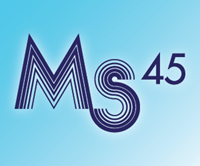By Aaron A.
 [How Microsoft Changed The World - Part 1, Part 2, Part 3, Part 4 --- A full list of MS@45 content, resources and the schedule for our online experiences on the weekend of April 4-5 can be found here. Join in the celebration with us! #MSFT45]
[How Microsoft Changed The World - Part 1, Part 2, Part 3, Part 4 --- A full list of MS@45 content, resources and the schedule for our online experiences on the weekend of April 4-5 can be found here. Join in the celebration with us! #MSFT45]
Microsoft set new standards in the computer industry.
Microsoft got its start in 1975 with Altair BASIC. By 1977, the company produced versions of BASIC for most popular micro-processor-based computers: there was a version developed for Radio Shack’s popular TRS-80 computer and another to run on the Apple ][. There was yet another release that worked for Commodore’s PET. In time, the company evolved into a leading programming languages supplier, producing dialects of BASIC, COBOL, Fortran, and Pascal for customers to create programs to their heart’s content.
In just over a decade the company was transformed and dominated the entire software industry.
How did this happen? Was it superior technology? Or was acute business acumen at the root of their success?
Microsoft was transformed by two hiring decisions. In 1980, IBM hired Microsoft to develop an operating system for the IBM PC. The following year, Bill Gates hired an exceptional young programmer named Charles Simonyi. The first resulted in MS-DOS and fueled the company’s rapid expansion in the 1980s; the second, which led to Excel and Word, secured Microsoft’s meteoric rise in the 1990s.
The IBM PC got its start after computer giant IBM decided to enter the $150 million microcomputer market. IBM honed a decades-long reputation for controlling EVERY step in the design, production, and marketing process for their computers: every component, each screw, all software was designed, tested, manufactured to precise specifications by IBM engineers. The resulting product was sold exclusively by IBM’s salesforce.
With the IBM PC (code named ACORN), IBM decided instead to behave like a startup. The company would move nimbly, operate with a small team, and source off-the-shelf components, including the operating system, which IBM contracted with Microsoft to supply. Indeed, the only things that IBM had copyrighted were something called the system BIOS that allowed the computer to begin its initial boot sequence, and the logos that adorned the machine. Even the company’s sales plan relied upon established retailers and departments stores.
The IBM PC was a smash success and the license for MS-DOS brought in a fortune to Microsoft. And as millions of IBM PCs were sold, a new market was created for software to run on the machine. IBM’s decisions to rely on contract suppliers sped the computer to market but carried significant consequences: if rival computer makers could create their own BIOS without using any of IBM’s code, they could create inexpensive “clones” that ran all available software developed for the PC (including MS-DOS).
And they did just that.
By the mid-1990s, Microsoft’s operating systems were installed on more than fifty million computers worldwide. Apple remained the only mainstream hold-out, everything else was just a PC.
The decision to bring Simonyi to Microsoft was even more significant. Simonyi was part of a ground-breaking group of computer scientists at Xerox PARC in the 1970s who developed a graphical-user interface workstation called the Alto. Among his contributions was a feature-rich word processor application called “Bravo.”
At Microsoft, Simonyi would lead the development of useful applications, including Excel for the Apple Macintosh and later, Microsoft Word. In 1988, Word and Excel were packaged with PowerPoint as Microsoft Office. Within a few years, sales from Microsoft Office contributed over half the company’s revenue. Even Mac users bought Office.
Not all were so thrilled with Microsoft’s role as standard-bearer, however. In the early 1990s, the Department of Justice investigated the company for its dominance in the computer market, and later, its efforts to control the Internet browser market. A judge eventually ordered the company to be broken apart, but that decision was overturned on appeal.